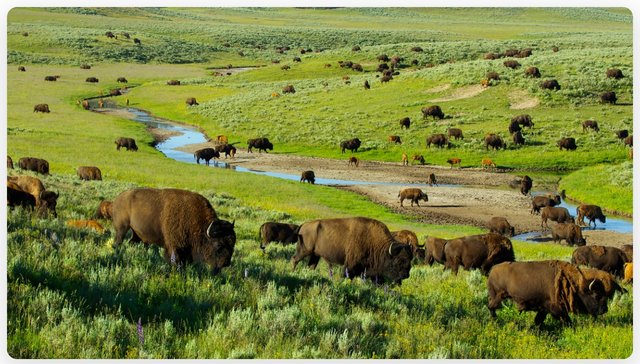
Hello my dear Steemians,
This is the new account “Planetwild” by @stef1 and @myskye. This account is about collecting Steem for the PlanetWild project. That's why I'm going to post once a day. Everything we get together here (Steem, SBD, SP) goes to the project. Then let's see what we can do here...


At first glance, the prairies, savannahs, and pampas of the United States, Africa, and Argentina might look like sparse, unpopulated grassy deserts. But these overlooked habitats are some of the biggest and most important ecosystems on Earth. Despite how important they are, grassland biodiversity is degrading faster than ever before in human history.
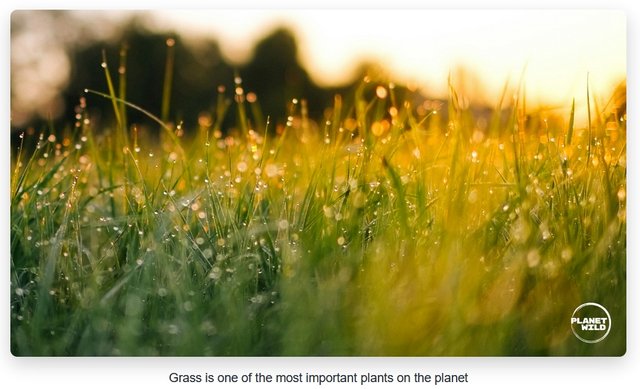
Grasslands can be found under many names such as savannahs, shrublands, steppes, rangelands, drylands, prairies, veld, llano, pampas, and meadows. Each has their own unique geology, climate, ecological traits, uses, and cultural distinctions. They account for between 20 and 40 percent of the world's land area, depending on how they are defined—an estimated 52.5 million square kilometers. To put this in perspective, the African continent is 30.3 million square kilometers.
Facts about grass
- There approx. 1,400 species of grass in the United States
- Antarctic hairgrass (Deschampsia Antarctica) is the only species of grass that grows in Antarctica
- The largest variety of grass is bamboo which can grow 150 ft tall!
- Grass is used to make sake, beer, chicha, and whiskey
- 800 million people depend on grasslands for agriculture and livelihood
Grass looked very different 70 million years ago. The plant evolved towards the end of the Cretaceous period and was only found on the forest floor. Over time, extensive grasslands spread across huge areas as it adapted to more open, arid environments.
Poaceae (the scientific name for the grass family) is one of the largest plant families on Earth, with over 11,000 unique species. Grasses are monocotyledonous—which means that a single leaf sprouts from one seed. Grasses are flowering plants, but their flowers are often so small that they need special names. Grass flowers are called florets, and one or more florets make up a spikelet. Sometimes it can be very hard to tell grasses apart, even among the experts!
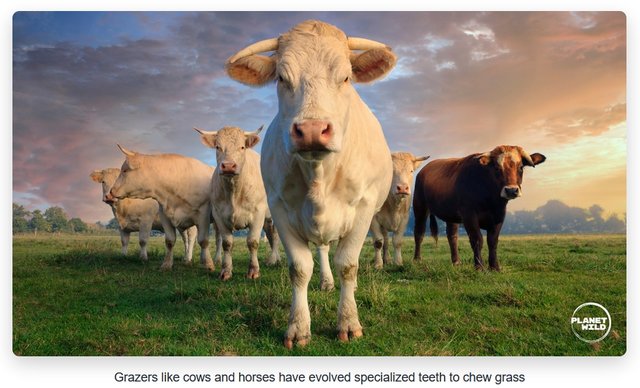
Grass grows a lot like human hair, from the base, rather than the tip like most other plants. Grasses defend themselves using tiny silica crystals called phytoliths, which provide some resistance to overgrazing. These phytoliths prevent herbivores from eating too much as it wears down their teeth.*
Grass does more than just exist. It draws massive amounts of carbon from the atmosphere, provides food and shelter for countless species, and keeps soil in place with their roots which prevents erosion. Despite its importance to the planet, grasslands are one of our most overlooked ecosystems. We will talk more about this later.
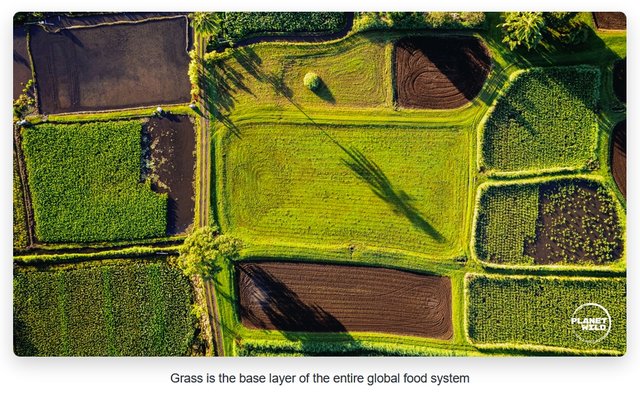
A 2019 ESA journal entry outlined three major kinds of grasslands: natural, semi-natural, and improved grasslands.
- Natural grasslands are wild areas that were created by natural processes like climate, fire, and wildlife grazing. They are also sometimes used for livestock grazing.
- Semi-natural grasslands are managed by humans and require livestock grazing or cutting for maintenance.
- Improved grasslands are pastures and farmland created through plowing and sowing, made with non-native, highly fertilized monocultures with high yield potential.
Natural and semi-natural grasslands are usually made up of many different kinds of grass. For example, the tallgrass prairies in the wetter eastern US support big bluestem, Indian grass, and switch grass which can grow up to eight feet. Travel further inland to the arid mid-grass prairies and you’ll see a region dominated by side-oats grama and wheatgrass. In Africa, the most common grasses are bluestem, thatching grass, and kangaroo grass.
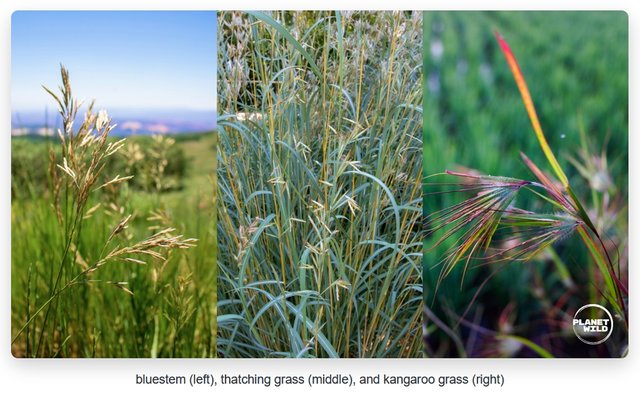
The variety and individuality of the grasses in the grasslands are what makes them such a biodiversity hotspot. Grasslands around the world have been heavily influenced by the evolution of grazing herbivores such as horses and cattle. These grazers have evolved specialized teeth and stomachs to digest the grass and withstand wear and tear. Known as ecosystem engineers, these herbivores are the architects of the grasslands, and alongside fire, help shape the landscape.
Grasslands are often undervalued and overlooked ecosystems because they may not be as exciting as coral reefs or rainforests—but they are fundamental to the planet and its future.
Grasslands have played a central role in human development and human history. Some people have thought that without the grasslands of modern-day Mongolia and Ukraine—which allowed easier movement of large armies and enough food for their horses—the conquests of Ghengis Khan and Caesar would not have been possible.
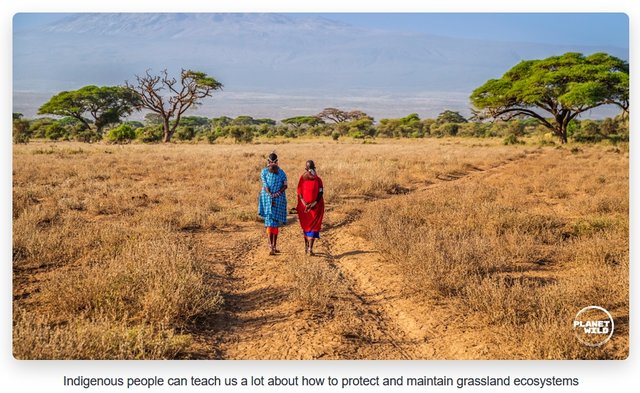
Over centuries, indigenous communities have used grasslands to build nomadic and pastoral lifestyles in this natural environment. Nomads in Mongolia, Kenya’s Massai, Gran Chaco Herders in Mexico, and the Sicangu Oyate in the US are all examples of communities who rely on the open grasslands for herding and growing their crops.




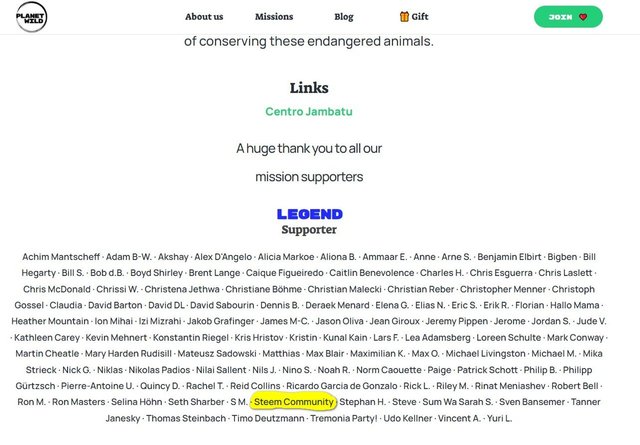
Even though Grasslands is going extinct, I strongly believe that we actually need it because their importance they offer is of great value to our surrounding generally. The fact that it provides this natural environment is a top addition and how I wish a lot of people can see it from that perspective you talked about in your post
Downvoting a post can decrease pending rewards and make it less visible. Common reasons:
Submit
Hello @stef1 and @myskye! 🌍 I'm excited to see the launch of your new account, Planetwild! The information you’ve shared about grasslands is both enlightening and vital for understanding their role in our ecosystem. It's amazing how such seemingly simple landscapes contribute so much to biodiversity and human livelihoods.
Best of luck with the project! 🌱
Downvoting a post can decrease pending rewards and make it less visible. Common reasons:
Submit
A little support to make it possible to to keep the project running, for our green planet!
Your post has been supported by THE QUEST TEAM. We support quality posts, good comments anywhere, and any tags
Downvoting a post can decrease pending rewards and make it less visible. Common reasons:
Submit